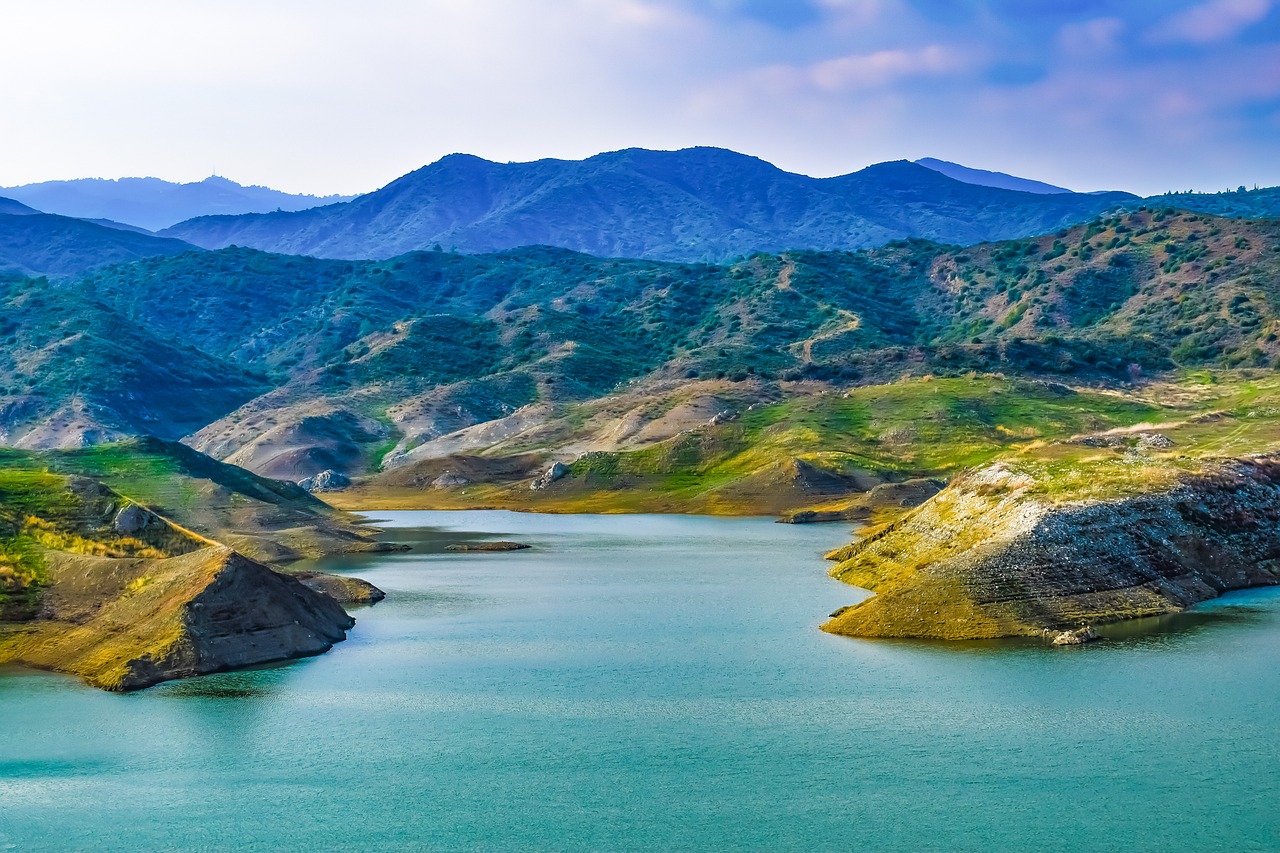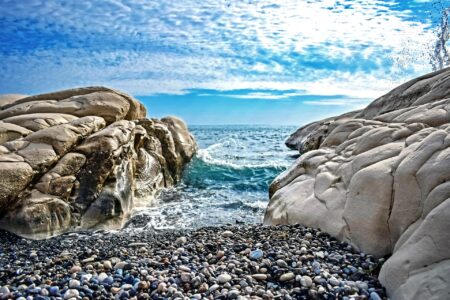Cyprus, the third-largest island in the Mediterranean Sea, boasts a unique geography that combines diverse landscapes, rich history, and a strategic location. Its geographical position and natural features play a key role in shaping the island’s culture, economy, and political significance.
Location and Size
Cyprus is located in the eastern part of the Mediterranean Sea, approximately 75 km south of Turkey, 105 km west of Syria, and 380 km north of Egypt. The island covers an area of about 9,251 km², making it the third-largest island in the Mediterranean after Sicily and Sardinia. The capital of Cyprus, Nicosia, is situated almost at the center of the island and is the only capital in the world divided between two countries.
Terrain and Landscape
Cyprus is characterized by a variety of landscapes, including mountain ranges, plains, and coastal zones. The main geographical regions are:
- Troodos Mountain Range: This is the largest mountain system on the island, located in the southwestern part of Cyprus. The highest point is Mount Olympus (1,952 meters). The Troodos mountains are known for their pine forests, mineral springs, and picturesque villages.
- Kyrenia Mountains: Located in the north of the island, these mountains stretch along the coast, creating impressive rocky landscapes. The highest peak is Mount Buffavento (1,024 meters).
- Mesaoria Plain: Situated between the Troodos and Kyrenia mountain ranges, this plain is the agricultural heartland of the island, where grains, vegetables, and fruits are cultivated.
- Coastal Zones: Cyprus is surrounded by an extensive coastline with sandy and pebbly beaches, lagoons, and rocky bays. The most well-known resort areas include Ayia Napa, Limassol, and Paphos.
Climate
The climate of Cyprus can be described as Mediterranean, with hot, dry summers and mild, rainy winters. The average annual temperature ranges from 16°C to 23°C. In summer, temperatures often exceed 30°C, especially in the central plains and coastal areas. In winter, snow sometimes falls in the Troodos mountains, allowing for winter sports activities.
Water Resources
Cyprus does not have large rivers or lakes. The primary sources of water are groundwater and rainwater collected in reservoirs. Major rivers like the Pedieos and Yialias are seasonal and dry up during the summer months. Water supply issues are often addressed through desalination plants and the efficient use of water resources.
Flora and Fauna
Cyprus’ flora is diverse, with over 1,800 species of plants, about 140 of which are endemic. The island is home to pines, cypresses, oaks, and numerous species of shrubs and herbs. In spring, Cyprus is adorned with a multitude of wildflowers, including rare orchids and anemones.
The fauna of the island includes various species of mammals, birds, reptiles, and insects. Among the mammals, the most notable is the Cyprus mouflon, a rare species of wild sheep, as well as foxes and hares. Cyprus’ birdlife attracts many species, including migratory birds like flamingos, which stop at the salt lakes of Larnaca and Akrotiri.
The geography of Cyprus, with its varied landscapes, mild climate, and rich biodiversity, is a crucial element that defines the island’s uniqueness. Its strategic location and natural resources have contributed to the development of Cyprus as an important cultural and economic center in the Mediterranean. The island’s history and modernity are closely intertwined with its geography, creating a unique and distinctive character.
















